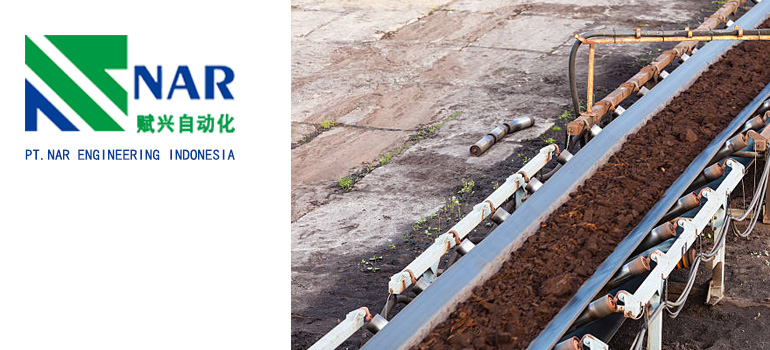Fertilizer belt conveyor is a conveying system used in the agricultural industry to transport bulk materials, especially fertilizers. It aims to efficiently and effectively transfer a large amount of fertilizer from one location to another, such as from storage facilities to fertilizer spreaders or directly to fields.
What are the components and functions of the fertilizer conveyor?

The following are some common main functions and components in fertilizer belt conveyors:
Belt: The conveyor belt is the main component of the system, consisting of continuous rings made of rubber or similar materials. It is responsible for carrying and transporting fertilizers along the conveyor.
Frame: The frame provides structural support for the conveying system. It is usually made of sturdy materials such as steel, designed to withstand the weight of fertilizers and the pressure of continuous operation.
Drum: The drum is positioned along the length of the conveyor belt to support and guide the conveyor belt as it moves. They help reduce friction and ensure smooth operation.
Motor and drive system: The motor provides power for the conveyor and provides the energy required to move the belt. The drive system includes gears, pulleys, and belts, which transmit the power of the motor to the conveyor belt.
Idler pulley: Idler pulley is a fixed drum used to support the belt and help maintain appropriate tension. They are carefully placed to ensure that the conveyor belt remains centered and does not sag or slip off the conveyor belt.
Loading and unloading points: These are openings or areas where fertilizers are loaded onto or unloaded from conveyor belts. They can be equipped with additional equipment such as hoppers, chutes, or nozzles to facilitate the transfer of fertilizers.
Safety function: fertilizer belt conveyor usually has safety functions such as Kill switch, protective device and safety sensor to prevent accidents and ensure the safety of operators.
Fertilizer belt conveyors come in various sizes and configurations, depending on the specific requirements of the application. They can be portable and height adjustable to accommodate different transmission points or fixed installations for more permanent settings.
What are the advantages of fertilizer conveyors?
Fertilizer belt conveyor is a common device used to transport fertilizers from one location to another. It has many advantages, including:
Efficiency: The fertilizer conveyor belt can transport a large amount of fertilizer from one place to another at a high speed and efficiency. It can complete a large amount of work in a short time and improve production efficiency.
Automation: Fertilizer conveyor belts can be integrated with automation systems to achieve automated fertilizer conveying processes. This eliminates the need for manual operations, reduces human resource investment, and improves work consistency and accuracy.
Strong adaptability: The fertilizer conveyor belt can adapt to various types and shapes of fertilizers, including granular, powdered, and block fertilizers. It can be adjusted according to the characteristics of the fertilizer to ensure safe and efficient transportation.
Space saving: Fertilizer conveyor belts are usually designed as compact equipment that takes up less space. It can be installed in limited spaces such as factories or farms, and can be customized according to specific space limitations.
Reliability: Fertilizer conveyor belts are usually made of sturdy and durable materials and structures, which have high reliability and durability. They can withstand long-term operation and heavy loads, reducing the risk of equipment failure and maintenance.
Environmentally friendly: Compared to other fertilizer delivery methods, fertilizer conveyor belts can reduce the generation of dust and waste. It can reduce dust emission through appropriate sealing and collection systems, and provide a cleaner and more environmentally friendly fertilizer delivery process.
In summary, fertilizer conveyor belts have advantages such as high efficiency, automation, strong adaptability, space saving, reliability, and environmental friendliness, making them one of the commonly used equipment in the field of fertilizer transportation.

